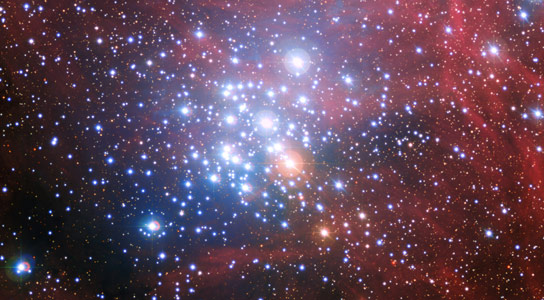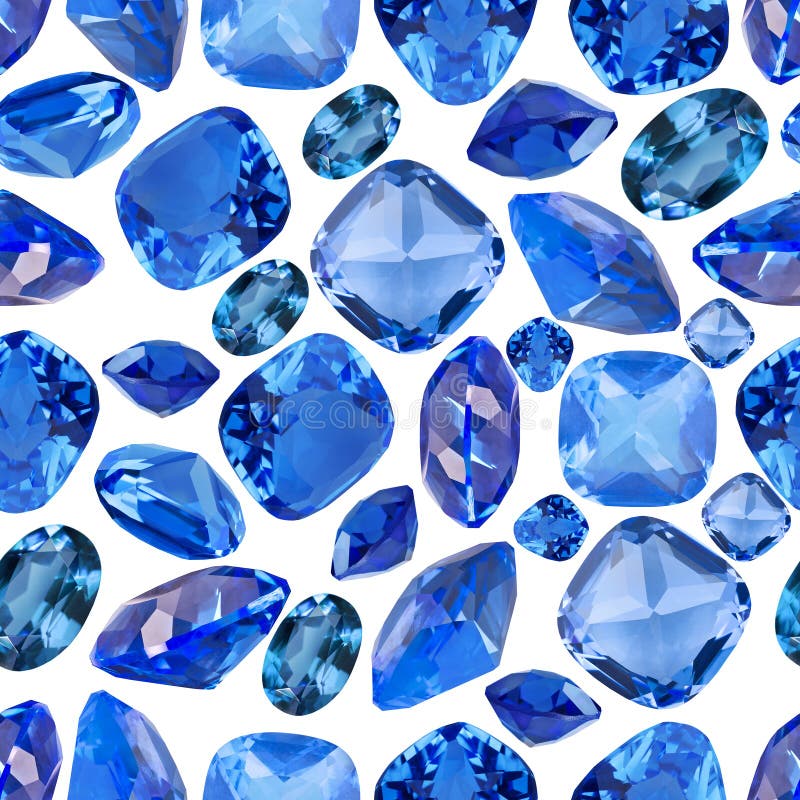Bugui wrote: ↑Mon Dec 02, 2019 7:54 am
Hello!. Thanks for the beautiful image and for the explanations. I have one basic question: If the blue dots on the other ring are stars, why don't we see yellow dots on the center region? or in the middle region? I understand that all that yellow light is created by thousands of stars...
Thanks again!
NGC 602, star formation in the Small Magellanic Cloud.
Photo: X-ray: NASA/CXC/Univ.Potsdam/L.Oskinova et al; Optical: NASA/STScI;
Infrared: NASA/JPL-Caltech.
The short answer is that the blue stars in the ring are young, but the yellow stars in the center are old.
Take a look at the picture at left, which shows star formation in the Small Magellanic Cloud. You can see a group of perhaps seven bright blue stars at upper right. These stars are hot, bright and blue, just like the blue stars in the ring of M94. The stars are also very massive, probably at least eight times as massive as the Sun, and possibly as much as 50-100 times as massive as the Sun. Such massive stars die very young, because they burn their "fuel" at a furious rate.
Young star cluster NGC 3293. Photo: ESO/G. Beccari.
The stars of NGC 602 in the Small Magellanic Cloud are very young, younger than the blue stars of the ring of M94. We can compare the bright stars of M94 with the bright stars of cluster NGC 3293. Look at the picture at right. As you can see, one of the stars in the cluster is orange. This star has turned into a red giant. The orange star has used up the hydrogen in its core, which is any star's prime fuel. When a star has used up its core hydrogen, it begins to die. Usually, the first step of dying is swelling up into a red giant. You can see, if you look at the Hubble picture of M94, that red stars are mixed with the blue stars in the ring. The red stars are red giants.
The more massive a star is, the faster it uses up all its fuel and the faster it dies. Very massive stars die in
supernova explosions, which completely destroy the star.
NGC 602 in the Small Magellanic Cloud. ESA/Hubble.
Stars of globular cluster NGC 6752 with background galaxy.
ESA - Hubble, NASA, Bedin et al
Take a look at the picture of NGC 602 again. Can you see that there are very many fainter stars close to the bright ones? These fainter stars were formed in the same burst of star formation that formed the brighter stars. But the fainter stars will live on long, long after the bright ones are gone.That is because the fainter stars are much less massive than the bright ones, and the less massive a star is, the longer it will live. And: The less massive a star is, the redder it is.
Take a look at the picture of globular cluster NGC 6752. There is a background galaxy peeking through the globular at left, but you can ignore it. But please note that the fainter the stars in the cluster are, the redder they are.
So why is the inner part of M94 yellow, and why can't we see individual yellow stars in it? It is because the stars in the center of M94 are
so numerous, so relatively faint and so yellowish. Take a look at stars in the globular cluster again. Not all of the stars are red, and the overall, "composite" color of all the stars in the center of M94 is yellow.
Sapphires. Fotos Libres de Derechos.
You can think of the blue stars in the ring of M94 as brilliant sapphires. But the yellow stars in the center of M94 are like age-old grains of sand.
Ann
 Starburst Galaxy M94 from Hubble
Starburst Galaxy M94 from Hubble









